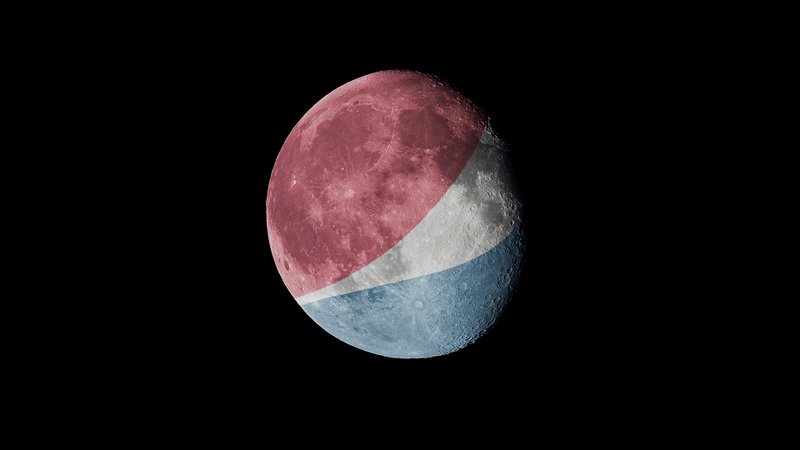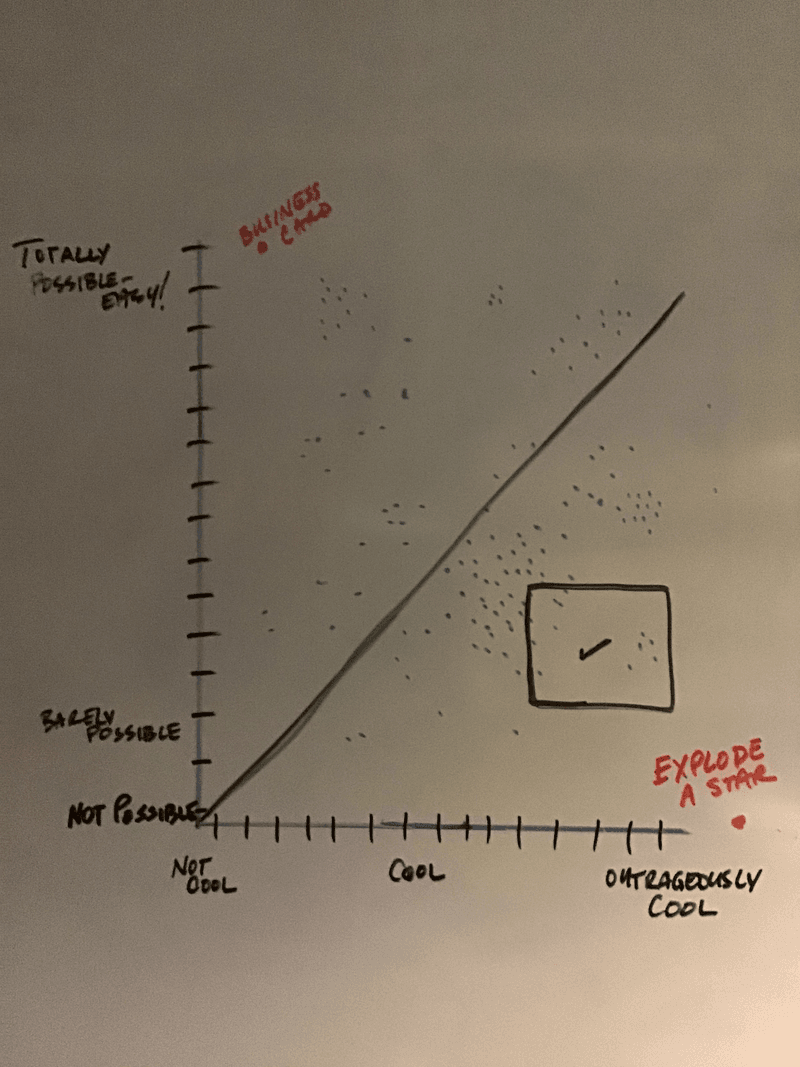
tl;dr : Great ideas are worthy everything and nothing – all at the same time. Ideas are cheap for creative people – executing on them and deploying them is more difficult. So – be generous with great ideas and then help them get birthed into the world!
Creative firms exist to develop innovative, surprising, and fun solutions to a client's communication problems. It's not just part of the job – it IS the job. This kind of thing falls squarely in the MANGOS category of our agency work (as opposed to more mundane broccoli work). Value pricing or cost-plus pricing is usually the very next consideration. Trying to assign value to a 'good idea' is tricky!
IF the creative concept lands, if it does its job and thrills the client/audience – well, that idea is worth quite a bit. If it drives revenue as well as *gasps* from the crowd, then it's worth even more. So – a common (and philosophical) question we toss around in our shop huddles all the time revolves around this question: WHAT IS A GREAT IDEA WORTH?
For years, we've been using this shop maxim:
A great idea is worth everything and nothing- all at the same time.
Sure, KFC's secret chicken spice recipe idea was worth a mint, but people have great ideas every day that don't translate to a billion-dollar franchise. We rarely act on those great ideas and even when we do, few actually ever move toward 'fully realized and implemented.' Right? So the value of any idea, concept, chicken-spice recipe skyrockets upon being constructed and deployed. The odds of success are much better for something that actually exists in real life – not just in the mind. So – our shop is always having to assess what idea is worth developing. We draw something like this:

Let me explain the graph. We put ideas on a white-board; we brainstorm all the various things we think would be fantastic solutions to any messaging problem. Those EXPO markers race all over the shiny white surface, but ultimately we have to decide which idea wins and gets developed. We scatter-plot the ideas on an X/Y axis (yes, like from geometry class). The X-axis is the idea quality; it begins at zero on the left with the term NOT COOL and ends at 10 with OUTRAGEOUSLY COOL. The Y-axis is the POSSIBILITY OF EXECUTING and it starts at zero with the term 'NOT POSSIBLE' and extends to that reads 'NOT POSSIBLE.' Here is an example: 'Make a fantastic business card' falls into the 'barely fun and imminently possible' region of our grid. We do that everyday.
All those little coordinates (dots) tell the story of what is both COOL and POSSIBLE TO EXECUTE. We circle ideas that rank well for delight and stand a reasonable chance of actually getting done well by our staff. The lower right part of the graph is the sweet spot. Those are the 'best ideas' – very cool and a stretch to develop. Easy is boring. Those ideas are offered to our clients.
It makes sense to us. It helps us determine what ideas should be assigned time estimates when building out a proposal. We realized this was a valuable brainstorming exercise when our shop was discussing the very real possibility that the future will bring orbiting light-displays in space that will light up the night sky with an ad for Coca-cola or Ford. We also reflected on the stunt that Elon Musk pulled off – placing his car into orbit.
This prompted us to theorize what cosmic manipulations would be possible for 'stunts' or big demonstrations. The farthest scatterplot point we could push into the upper right quadrant for both MEGA COOL and NOT EVEN PLAUSIBLE would be to 're-animate/resurrect Vladimir Lenin's body so that he stood up and walked around Red Square' or 'explode a visible star.' Could you imagine the press and attention BOEING would receive if they were to launch a new airliner model at precisely the same time they manipulated the galaxy?! Bananas. This lunar eclipse is brought to you by Shell Oil (and then a Shell icon shape produced by a precisely placed UV blocker is visible during the eclipse). Come on! A creative team somewhere would have been responsible for a concept that elderly grandparents would tell the children of the future – I saw the Shell in 2032, when I was just a little girl – and I remember when Pepsi painted their red/blue logo wave on the surface of the moon.
But, you know – when you realize that ideas a cheap to generate – it makes you far more GENEROUS with those thoughts. Our shop never 'hoards' ideas that would help clients, project partners, or even our market competition. In fact, we stand up and applaud anyone who can turn a great concept into an actuality. We even make a point to spend a little time each month coming up with fun/value-add ideas for previous and existing clients. Creative agencies should be able to generate ideas by the metric ton – so why not charge based primarily on execution/deployment? Fun generosity wins and helps others win, so ideas are kind of worth everything and nothing. All at the same time.
Do you need help
talking to your
perfect clients?